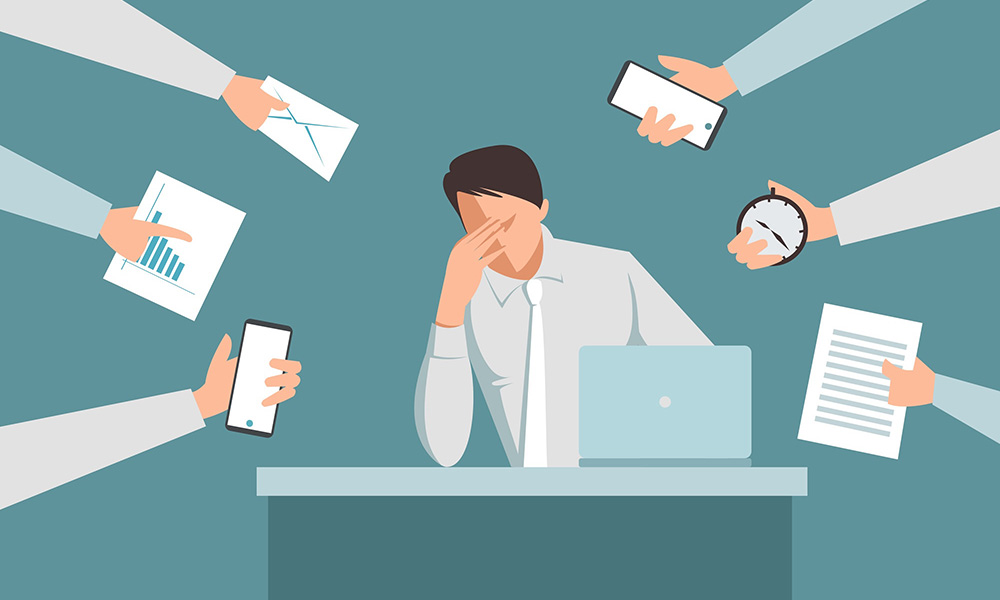“We are home working alongside our kids, in unsuitable spaces, with no choice and no in-office days. This will create a productivity disaster for firms.” Nicholas Bloom, senior fellow, Stanford Institute for Economic Policy Research (SIEPR).
Over the past few months, I have written about various aspects of WFH, from how to avoid burnout to the importance of self-care. Since the start of this pandemic, most of us have been in firefighting mode, coping with the fresh challenges that have kept cropping up every few weeks. It has been a Herculean effort for you to simply complete essential work tasks, keep the household running and safeguard your mental health. At the same time, those of us who have been privileged to work from home have valued the flexibility and no commute times.
As the initial adrenaline rush has settled down, we are now taking a harder look at some of the challenges with WFH – patchy technology infrastructure, inadequate workspaces at home, risk of burnout, blurrying boundaries between work and life, lack of social interactions with colleagues, increased burden on working women, to cite a few.
Interestingly, economist Nicholas Bloom had published a study back in 2015 about the benefits of working from home. His research, based on a company in China, had found a 13% increase in performance and 50% drop in attrition. However, Bloom feels that the current situation is very different. Working parents are managing their kids at the same time, who are studying from home. People don’t have a choice whether they can work from home or from the office. And staying focused and remaining motivated, especially when it comes to innovation can be particularly problematic.
Being effective at WFH is a skill. And like any skill, it needs to be developed and practiced.
Whether you agree with Bloom or not, remote work will likely remain an essential feature of many corporate jobs for the foreseeable future (and beyond). For instance, TCS has announced it is working towards a model called 25/25 where only 25 per cent employees will work from office by 2025.Therefore, it is important to figure out how to sustain and thrive with this model over time. I have realised that being effective at WFH is a skill. And like any skill, it needs to be developed and practiced. Given the unusual circumstances this year, the switch to remote work happened practically overnight, with no time for preparation or training. Some of you may have done occasional WFH before the pandemic, but this is a whole new ball game.
So, it’s time to structure remote work now in a more deliberate manner that sets you up for success and fulfilment. This week, my message focuses on how to be more productive while working from home. What practical steps can you take to save time, enhance your output and maintain a healthy effectiveness between work and the other aspects of your life?
Here are seven recommendations to boost your productivity and optimise your time while working remotely:
1. Transition in and out of work mode
While the disappearance of the dreaded commute is generally viewed as a blessing, it does have a downside. For most people, their commute was a zone of transition where they switched gears between home and work. Without it, you might find yourself diving headlong into work first thing in the morning and working way past your clock-out time: “just one last email” often extends the workday by at least a few hours. This not only damages your health but also dilutes your productivity, as the brain is constantly tired and stressed.
Set clear boundaries between work and the other aspects of your life by bookending your office hours with transition rituals. In the morning, try recreating your former commute with a different spin: listen to an audiobook, mentally plan the day ahead or enjoy your morning beverage. End each workday with a short celebration: playtime with the kids, an energising workout or chatting with a loved one. In the Harvard Business Review article, How to (Actually) Save Time When You’re Working Remotely, the authors elaborate:
Find a ritual that can mark the end of your workday and give you something to look forward to. These daily routines help you celebrate what you have accomplished during the day (rather than focusing on what still needs to be done), bringing life meaning and happiness.
2. Reserve time for vital work
When under stress, we tend to overlook tasks that may be extremely important but not urgent. These are the activities that fuel career learning and progression, catalyse future innovation, and give work a sense of purpose. Getting out of firefighting mode means making space in your schedule once again for these deep-work tasks. This will give your productivity a genuine boost, beyond simply meeting the next deadline or handling the latest crisis.
Schedule a daily block of 45-90 minutes for important-but-not-urgent work, during which you disconnect from all distractions. Set a timer, turn off device notifications, and let your family know that you need to work without interruption during this period. You will also need to protect this window from meetings and calls. It can be helpful to schedule this block at the same time every day, so your family and co-workers are aware of it and can work around it.
3. Optimise your workspace
Some of you have the luxury of working in a home office, while others may be setting up their laptops wherever possible. Even in less-than-ideal circumstances, you can still take action to optimise your workspace. Make sure the area is well lit: investing in a simple desk lamp can help you prevent the damaging effects of eye strain. Francine Jay, author of The Joy of Less, advises minimising the distractions of clutter:
Surfaces are not for storage. Rather, surfaces are for activity, and should be kept clear at all other times.
Keep only necessary papers and stationery on your workstation. At the end of the day, close your laptop, gather up all work-related items and put them away. This way, when you return in the morning, you can start with a clean desk and a clear mind. As far as possible, restrict work to a specific area so your entire home doesn’t start feeling like office space – this can make it very difficult to forget about work and relax.
4. Join an online “work gym”
When working remotely, the absence of a watchful eye can be a boon or a curse. Some people are highly self-disciplined and thrive with minimal supervision, but others do best when working alongside others. Without the element of social accountability, they tend to become demotivated and unfocused.
Online “work gyms” aim to solve this problem. Participants join virtual sessions where they work in the company of other people, with a camera-on policy. Each session lasts for a pre-determined length of time, with members working on a single task throughout. The combination of accountability, structure and monotasking can help to create a state of hyper-productivity. As a BBC article on work gyms explains:
It’s also possible, of course, to replicate the experience on your own terms, whether getting into your own timed sprints, or grabbing a friend to work alongside you over a video call.
5. Reclaim your commute time
If your daily commute in the pre-pandemic world was 30 minutes each way, you should now have an extra one hour every day, right? If you’re like most people, however, this precious time must have been taken up by unimportant work. This is a perfect example of Parkinson’s Law, which states that work expands to fill the time available for its completion. Regaining the time spent on commutes is one of the few silver linings of the pandemic, so use it wisely. Whether you’re putting it towards a passion project, a fitness programme or quality time with loved ones, schedule this valuable extra hour into your calendar so it doesn’t simply get swept away in minor, unproductive work tasks.
6. Choose active leisure
How you spend your free time plays a big role in your overall wellbeing – and by extension, your performance at work. Leisure activities can be divided into two categories:
- Passive, e.g. watching television, listening to podcasts or music
- Active, e.g., socialising with family and friends, mentally stimulating hobbies and games, sports and exercise
While passive leisure is a great way to unwind and de-stress, it should ideally be balanced with active leisure, which improves physical health, cognitive function and relationships. During the pandemic, passive leisure activities have increased disproportionately, which is understandable since the usual venues for active leisure have become tough to access. So, why not explore innovative ways to connect socially and pursue your hobbies? So many options are now available – from virtual happy hours and game nights, to socially distant fitness activities, to online classes in everything from baking to meditation.
7. Leverage technology
Technology has opened up a range of new possibilities of enhancing productivity. On average, office workers spend a mind-boggling four hours a day tackling emails. An inbox enhancement tool can help you tame your inbox more efficiently. Speech-to-text apps can cut down typing/writing time by taking verbal notes. A robust project management tool can eliminate unnecessary meetings and make team collaborations easier, with features like visual roadmaps and task management to keep you on track.
With WFH becoming a way of life, it’s critical to set up a routine that works best for you. In many cases, working remotely can lead to higher-than-usual productivity and a better work-life effectiveness – but only when it’s done right.








Comments